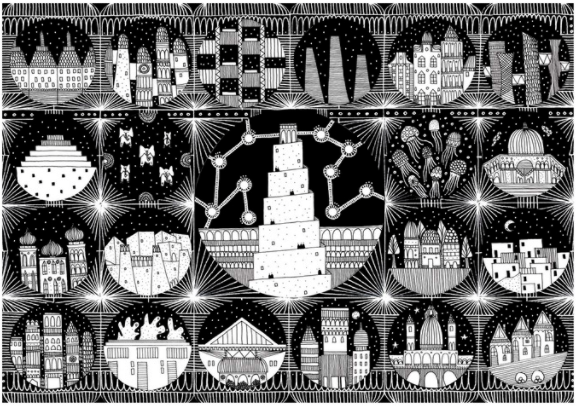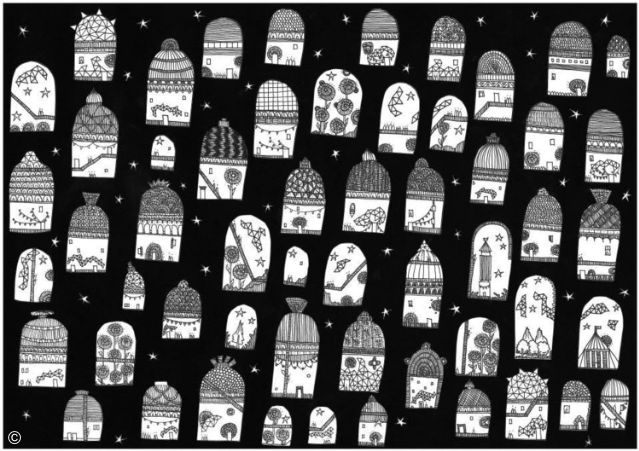
Excerpted from archdaily.com and written by Osman Bari, this article is reposted on Field Notes as an introduction to the upcoming 2017 September Salon & 4CITIES alumni reunion, which will take place in Brussels during the graduation weekend. This year’s September Salon will feature an urban exploration game inspired by Calvino’s beloved book and the excellent projects of zURBS, a social-artistic laboratory co-founded by two 4CITIES alumni.
Ah, Invisible Cities. For many of us, Italo Calvino’s 1972 novel reserves a dear place in our libraries, architectural or otherwise, for its vivid recollections of cities and their curiosities, courtesy of a certain Marco Polo as he narrates to Kublai Khan. And while the book doesn’t specifically fit the bill in terms of conventional architectural writing, it resists an overall categorisation at all, instead superseding the distillation of the cities it contains into distinct boundaries and purposes.
For though there is a certain kind of sensory appeal that is captured in the details of places, the real beauty of Invisible Cities lies in the masking of underlying notions of time, identity and language within these details – a feat that is skillfully accomplished by both Marco and Calvino. With this in mind, here are three of many such principles, as revealed by the layered narrative of Invisible Cities.

Diomira. Image © Karina Puente Frantzen
Visual Specificity As A Cultural Language
Much of Invisible Cities’ charm can be attributed to the specificity of its writing, and as a result, its narration. Throughout the narrative, 55 versions of city life are described with enthralling character, the first of which is Diomira, “a city with sixty silver domes, bronze statues of all the gods, streets paved with lead, a crystal theatre, a golden cock that crows each morning on the tower.” Details such as these constitute the overall visual communication between Marco Polo and us, as we assume the role of Kublai Khan, contributing to the successful creation of fictional cities through typologies and artifacts. This demonstrates our inherent reliance on specific imagery to create understanding; a facet that is an integral part of architecture.
Now his accounts were the most precise and detailed that the Great Khan could wish and there was no question or curiosity which they did not satisfy. And yet each piece of information about a place recalled to the emperor’s mind that first gesture or object which Marco has designated the place.
Yet, the impact of this highly visual culture seems to go unnoticed at times. Polo describes the city of Tamara, laden with signs of all sorts, where “the eye does not see things but images of things that mean other things.” This is telling of our current over reliance on distinct symbolic communication, and a reduction of the image to encompass certain connotations. Though architecture is fundamentally a visual field and medium, it is important to allow for an unintentional evolution of meaning and understanding through one’s own sensory experiences, as a result of a slightly passive hand of the architect. Marco himself resorts to a more abstract identification of cities, providing genuine translation not possible through the specificity of visual wordplay. keep reading at archdaily.com


